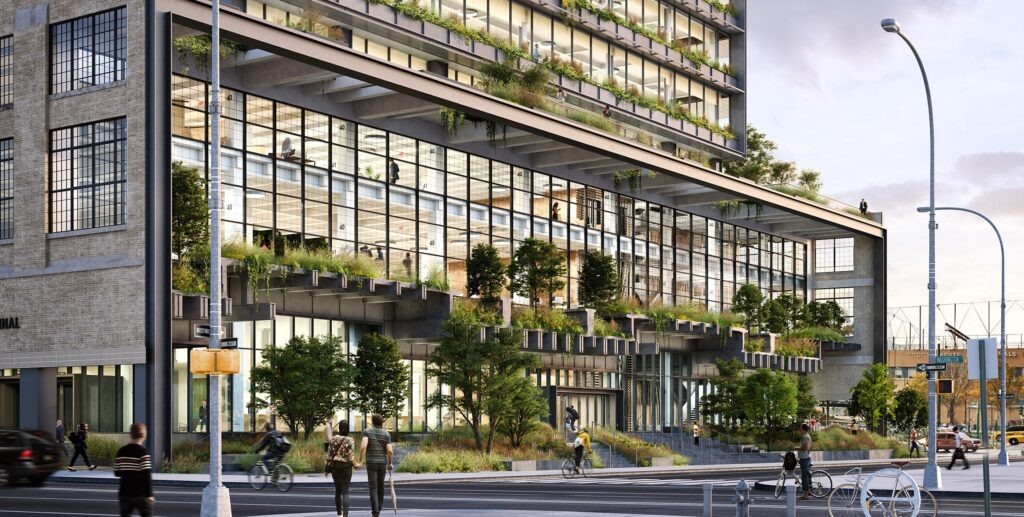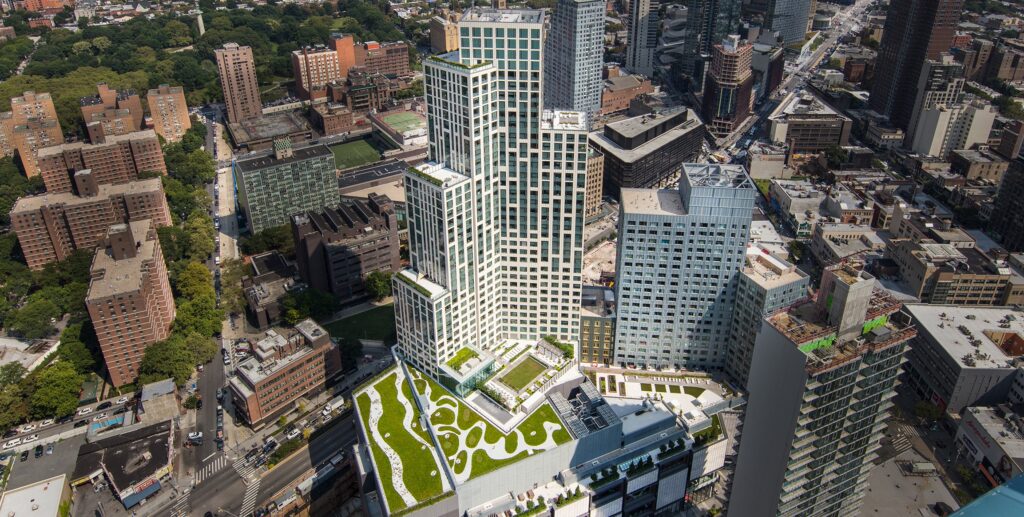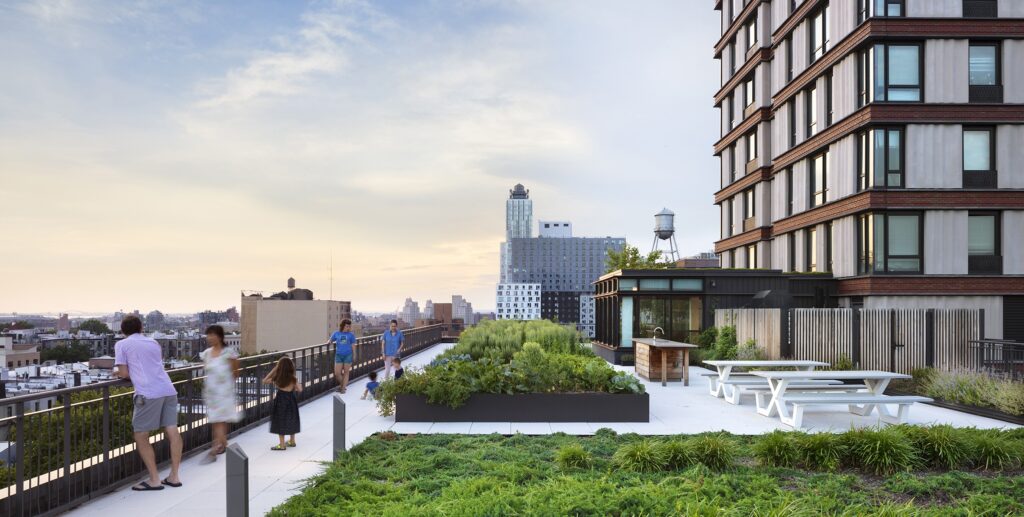
Speaker Spotlight: Brandon Specketer
Today, we are highlighting Brandon Specketer, partner at COOKFOX Architects in New York City. COOKFOX was founded to create sustainable architecture using holistic, biophilic, and beautiful design solutions, particularly in urban settings. This type of high-performance architecture is what Brandon regularly speaks about and has proven to be vital in his work at COOKFOX. He has also been guest lecturer at the Building Green Conference in Copenhagen and the New York Green Building Conference. It is also evident that biophilic design is a part of the firm’s mission when looking at their studio and workspace which fosters the connection to nature inside and outside of the space.
Read our Q&A with Brandon below.
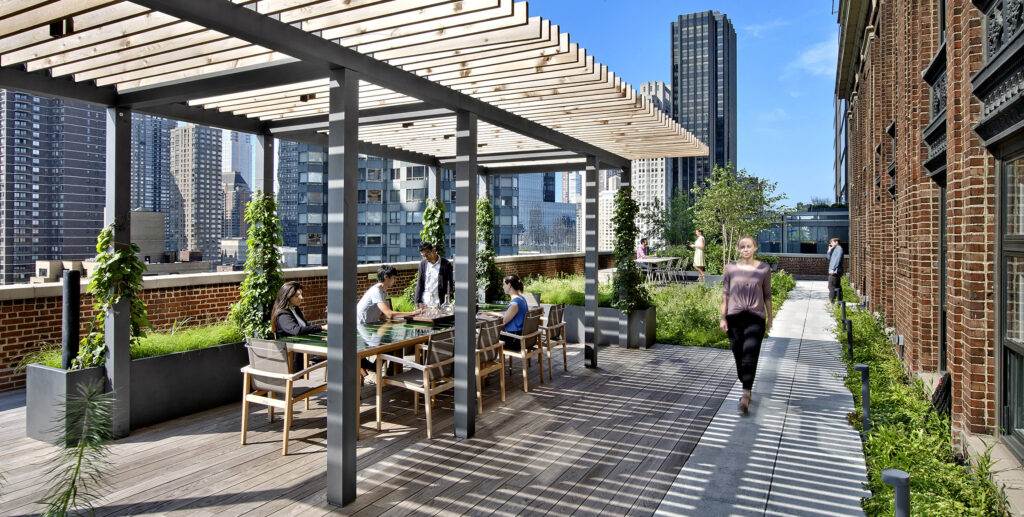
Would you give a short summary of what you’ll be speaking about at the AIA TN conference and its importance for architects?
Brandon: The title of the presentation will be “Unpaving Paradise: Sustainability, Wellness, and Equity in Practice.” Drawing on the principles of sustainability, wellness, and biophilic design, COOKFOX’s aim is to establish a framework through which these ideas become practice. Rather than viewing these design strategies as isolated tools, our work understands them to be in conversation with one another. Sustainable, high-performing architectural design promotes social justice within the built environment. Projects like the Neeson Cripps Academy, Betances Residences, St. John’s Terminal, and 122 Varick not only embody aspirational design standards, but also engage with social needs for high-quality learning environments, affordable housing, and workplaces embedded in their surrounding communities. In this keynote speech, we will explore how an architect’s approach to form and ethical obligations inform one another.
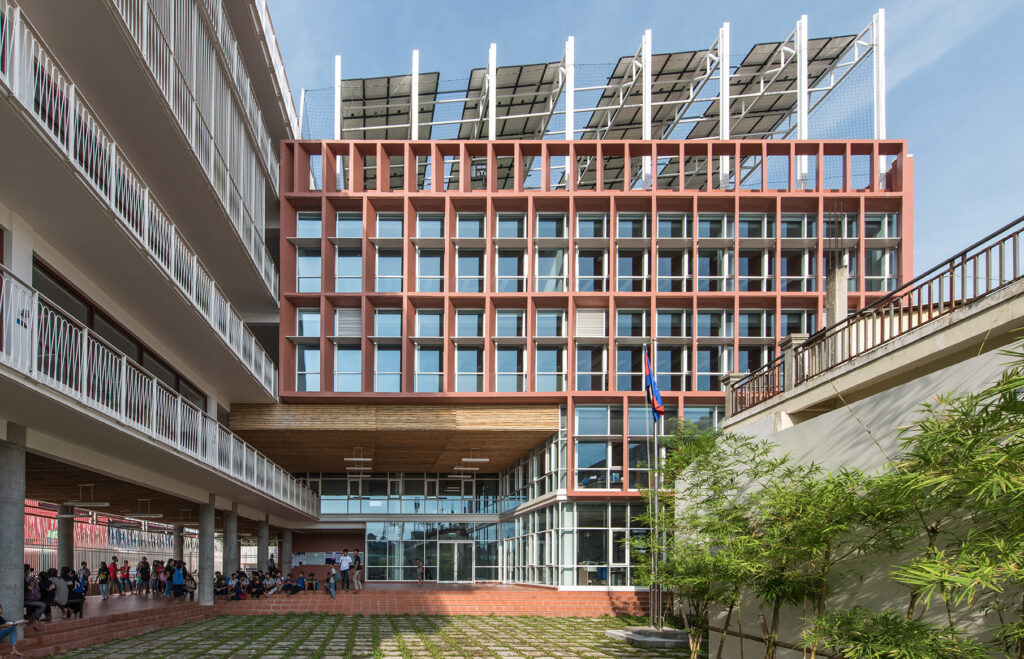
Urban high-rise buildings and biophilic design strategies are not exactly an intuitive pairing. How have you developed your design philosophy to understand and implement biophilia in your work?
Brandon: Conventional wisdom maintains nature and urbanity do not and cannot coexist. Through designing spaces that resemble natural environments, we organize building experience according to principles found in nature. This is the meaning of biophilia. Two concepts found in our work are prospect, a term designating the wide views of a landscape found in elevated natural settings, and refuge, which refers to design that adopts natural strategies in sheltering occupants.
The materials used for building construction can also express biophilic preferences. Humans tend to find comfort in natural materials such as wood or stone, a feeling that motivates my studio’s decisions when crafting a building’s design. This also means interpreting natural forms and patterns through manufactured materials. A biophilic typically features integrated plantings or vegetation. Studios have shown direct visual connection with nature produces positive physiological and psychological benefits, highlighting how biophilia and wellness are related to one another. A workplace or home should be an oasis from urban life, an aspiration that guides much of COOKFOX’s work. This framework makes biophilia relevant to the central problems of urban design and construction.
In addition to being passionate about sustainable design and high-performance buildings, you also speak regularly about professional practice. Do you have any best practices that you feel are universal to all architectural practice? What is the one thing that you hope your students at Cornell take away from your lectures?
Brandon: Work on projects that you know will leave our planet and our communities in a better state. Rather than seeing architecture as a straight line from design to completion, an architect must recognize a site’s heritage and work towards preserving that heritage for future generations.
We are not only designing buildings for the present, but also designing buildings for the future. Our practice is circular, weaving together past, present, and future in dialogue. The best architects also collaborate with experts outside of their field.
As we recognize the full extent of our field’s interdisciplinary character, we must seek advice from community leaders, health experts, and activists. Architecture is not an easy profession – it is, at its core, problem solving. I would encourage future architects to find problems they are passionate about solving. Keep in mind those things that help you get out of bed in the morning. They can be small, but they must motivate you to persist in the most difficult times.
As an Oklahoma native, is there anything you miss about those wide-open spaces? And do you feel like your background brings a special perspective to designing in such a dense urban environment?
Brandon: Oklahoma’s vast expanses showcase nature in its most intense and visceral state. Here, living with nature is not a boutique marketing phrase, it is a way of life. Glancing towards the horizon reveals vital data about future weather patterns that could become a matter of life or death. We often reduce nature to picturesque landscapes, ignoring the role weather plays in regulating our experience of nature. Ecosystems are incredibly complex and understanding how that complexity works in the field can translate into better biophilic design for urban settings. Cities themselves are ecosystems, meaning humans, their buildings, and those things we designate as natural – plants and animals, for example – are all implicated in an interdependent web.
The best cities are those that use human construction to demonstrate our reliance on nature. Hyde Park, Central Park, the Tuileries Garden. These spaces endure in our collective unconscious for a reason – they invite city dwellers to participate in natural beauty and clarify nature’s importance in upholding urban harmony.
Where are most of your projects located? Is this strategic with the type of work or research you are passionate about? Where would you like to design a project that you haven’t already and why?
Brandon: While our projects have been historically based in New York, COOKFOX has begun work in other American cities. Through two projects in Tampa, one project in Miami, four projects in Washington D.C., and one in Austin, our work is becoming national in its scope and initiating profound transformations. Buildings that emulate the most aspirational vision for sustainable, inclusive design can raise standards in a specific local context.
This is the result of prioritizing our mission and our values. We determine what goals we can achieve through a project and whether the client shares our interest in making a positive impact.
What other interests outside of design do you have that contribute to your work?
Brandon: My interest in photography reflects an affinity for visual composition and design that is found in every aspect of my architectural practice. I tend to prefer close-up detail studies and try to capture brief vignettes of urban life. Architecture is both incredibly broad and incredibly focused. Photography engages with both scales of this work. I am also interested in running and cycling, both of which are both intensive physical activities that expend energy and give me direct connection with nature. I know it sounds cliché, but exercise does help you manage stress.

